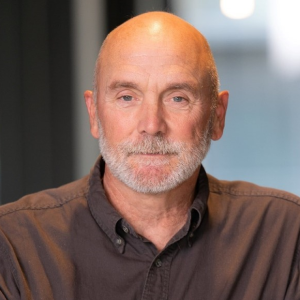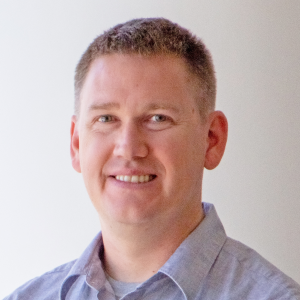Concurrent Session 3 | May 6 | 2:45 – 4:15 PM
Session 3.1 A
NEPA | Predicting Wetland Succession During NEPA Review in Consideration of Climate Change
2:45 – 3:15 PM
| About the Presentation |
|
Predicting ecological impacts from land use and development, and proposing mitigation measures, are important components of NEPA evaluations. To incorporate climate change into those analyses, one is directed to consider how climate change may impact resources of concern, independent of the proposed project, then consider how the project impacts may interact with the trajectory predicted under climate change. I will describe a conceptual framework for evaluating climate change impacts on wetlands with application to related impact analyses such as biodiversity, habitat for wildlife or protected species, and NEPA assessments. This framework consists of the following components: (1) hydrogeomorphic wetland classification, (2) wetland water budget description, (3) climate change projections, (4) use of natural experiments, (5) construction of successional pathways, and (6) interaction with project impacts. The hydrogeomorphic classification is necessary to place a wetland in a landscape context to understand its position in a watershed and to understand underlying soils and parent material, all of which affect drainage and connection with regional groundwater and surface water. The water budget description considers water input, storage, and outputs, all of which may be altered by climate change. Projections of possible climate change can be generated through a variety of online tools and will provide insight into total precipitation, seasonally precipitation distribution, precipitation event intensity, and evapotranspiration trends. Observation of natural experiments induced by land use and management patterns can provide insight into possible ecological changes in wetlands with similar geomorphology. Succession in flora and fauna are likely through pathways such as altered hydrology, invasive and aggressive plant species, fire suppression, and nutrient input. By combining regional observations with the projected climate alterations to wetland water budgets, a suite of possible successional pathways can be projected, and interactions with project impacts can be predicted. This framework is described in a qualitative way, but it could be applied in a quantitative manner depending on project needs. Examples and case studies will be provided to illustrate the conceptual framework. By understanding possible ecological pathways for succession, mitigation measures can be developed to help ensure desirable outcomes.
Attendees of this session will develop an understanding of the following:
- Application of climate change models to ecological impact assessment
- Application of climate change models to wetlandsInteraction of climate change impacts and project impact assessment
|
| About the Speaker |
|
 Daniel Jones Daniel Jones
Senior Environmental Scientist
HDR, Inc.
Daniel Jones is a botanist and ecologist documenting impacts of major projects on natural resources, with expertise in rare plants and native plant communities. He has conducted surveys for listed plants throughout the Midwest, Great Plains and Pacific Northwest. He assists industry and agency clients with federal and state endangered species and natural resource regulations. Daniel also is proficient in NEPA and its state equivalents and has been a lead or contributing author on federal and state EISs and associated permitting for mining, transmission, transportation and pipeline projects. He is currently a senior environmental scientist with HDR, Inc.
|
Session 3.1 B
NEPA | Increasing Wildfires in the US and the Programmatic NEPA Approach
3:15 – 3:45 PM
| About the Presentation |
|
Wildland fires can be devastating, but not all fire is bad. Periodic low-intensity fires speed up the process of forest decomposition, create open patches for restoration, improve habitat and food for animals, and deliver nutrients to vegetation. Forest ecosystems were historically shaped by naturally occurring fires and the introduction of fire to achieve goals to mitigate wildfire threats (e.g., land clearing and reduction of fuels). However, wildland fires in the United States have been increasing in size and severity in recent years, exacerbated by abnormally dense fuel, drought, and other climate stressors (e.g., warming temperatures and shifting precipitation patterns). In addition, the heat and aridity of climate change impedes post-fire natural regeneration, increasing the risks of vegetation type conversion (e.g., trees to shrubs, or shrubs to grass). These impacts threaten the function of these systems and the ecosystem services they provide including water, carbon sequestration, biodiversity, and more.In consideration of people, property, and infrastructure that could be at risk from wildfire in the future, several agencies have joined together to enable interagency support, leverage resources on large wildfire incidents, address wildfire occurrence, fuel treatment, and post fire restoration on a more programmatic level. Interagency federal fire policy requires that every area with burnable vegetation must have a Fire Management Plan to provide for firefighter and public safety and outline fire management strategies and tactics. Most plans require National Environmental Policy Act (NEPA) documentation that describes potential impacts from treatment alternatives, mitigation measures, and best management practices. In cases where land boundaries overlap (e.g., NPS monument on BLM land), the geographic scope of the NEPA document should be provided an equivalent level that satisfies the needs of all agencies with jurisdiction. Another way to consider multiple agencies over a large land area is developing a programmatic approach to FMPs and their associated NEPA documents.
The session objectives are to inform attendees of:
- The basics of wildland fire
- Current climate change impacts pertaining to wildfire
- Wildfire management
- Wildland urban interface areas
- Interagency cooperation and coordination
- Programmatic NEPA approach for evaluating fire management plans
|
| About the Speaker |
|
 Liz Ricciardi (Vashro) Liz Ricciardi (Vashro)
Director of Environmental
Adanta, Inc.
Liz has more than 19 years of experience in environmental planning, compliance, permitting, and project management and has worked with numerous federal, state, local, and Tribal agencies and private developers across multiple sectors throughout the United States. Throughout her career, Liz has managed and developed a variety of environmental documents, including NEPA, CEQA, MEPA, PUC, and due diligence. In addition, Liz has provided environmental compliance and permitting support; conducted noise modeling, surveying, and monitoring; supported electrical substation and transmission maintenance and improvement projects; and conducted cradle-to-grave project management.
|
Session 3.1 C
NEPA | Examining the Relevance of Ecological Resilience in NEPA Analyses
3:45 – 4:15 PM
| About the Presentation |
|
Currently, no regulatory requirement exists to drive the evaluation of ecological resilience within National Environmental Policy Act (NEPA) analyses. Nevertheless, there is a desire, as articulated at the national and international policy levels, to develop means of pragmatically addressing the current biodiversity crisis, habitat loss, and loss of ecosystem goods and services. Developing a means of conceptualizing, operationalizing, and applying tools that account for ecological resilience, defined here as the ability of an ecosystem to absorb disturbance and maintain its structure and function, within the framework of the nation's premier environmental analysis regulatory regime may offer one facet of a solution. In an effort to begin the conceptualization of the means of meaningfully incorporating ecological resilience into NEPA analyses this work proposes to accomplish three goals:1) Identify regulatory and institutional constraints related to addressing ecological resilience within NEPA analyses. 2) Identify potential benefits of addressing ecological resilience within NEPA documents. 3) Examine a set of practical questions relevant to both agency and consultant NEPA practitioners on the applications of the concepts within NEPA.
Objectives:
- Delve into the relevance of addressing ecological resilience within the NEPA regulatory framework as we are currently in an era of regulatory realignment
- Engage attendees in a discussion on how to apply the concepts that surround ecological resilience in a manner that adds meaningful value to NEPA analyses
|
| About the Speaker |
|
 Bradley Johnson, PhD Bradley Johnson, PhD
Federal Water Lead
HDR, Inc.
Dr. Bradley Johnson is an ecologist, having obtained his doctorate from the University of New Hampshire in 2011. Brad spent over a decade in the federal civil service with the bulk of his tenure spent with the National Park Service and Bureau of Land Management, where he provided leadership in environmental planning and natural resource management. He has been with HDR for two-and-a-half years in his current role as Federal Water Lead. He is an Army veteran and served a combat tour in Iraq in 2004.
|
Back to Top
Session 3.2 A
Biological Resources | Valuing and Assessing Wildlife Crossings for Compensatory Mitigation in Florida
2:45 – 3:45 PM
| About the Presentation |
|
Florida's population grew by more than 14 percent to nearly 22 million people, from 2010 and 2020. The University of Florida's Bureau of Economic and Business Research projects that Florida's population may reach 26.5 million people by 2040. As Florida grows, highway capacity improvement projects are necessary to ease congestion and improve public safety. The increase in frequency or road widening along with new greenfield projects results in an increased rate of habitat fragmentation and wildlife isolation. The increased fragmentation has accelerated the need for wildlife crossings and other facilities that attempt to repair or enhance habitat connectivity. Additionally, the inherent conflict between highways and wildlife has resulted in considerable opposition and long-term delays to the Florida Department of Transportation (FDOT) efforts to accomplish planned highway improvements ahead of the predicted population increases. The INVEST in America Act, which includes $100 million annually for wildlife crossings, and the Florida Wildlife Corridor Act, which provides $300 million for the Florida Wildlife Corridor through the Forever Florida program, are just two examples of recent policy success stories that confirm the almost universal support for maintaining and enhancing wildlife habitat connectivity nationwide. What may have started as a simple bridge or culvert retrofit project can evolve into planning studies coupled with landscape-level ecology emphasizing data-driven design and siting requiring coordination between engineers, scientists, regulators, planners, non-governmental organizations, elected officials, and the general public. This collaboration has increased the overall number and efficacy of wildlife crossings and garnered increased public support for these projects in light of the increased cost compared to a traditionally designed and constructed linear transportation facility. As the need for habitat connectivity increases, deliberate and premeditated actions are necessary to provide the needed connectivity enhancements while balancing costs, regulatory timeframes, and project schedules. This presentation will focus on the recent development of a wildlife crossing and habitat connectivity assessment methodology that has been applied to several new projects in Florida. Additionally, the methodology developed utilizing the Uniform Mitigation Assessment Methodology (UMAM), and that is applied to both state and federal permitting guidelines, was recently published in the journal Ecosphere.The session will provide an overview of the methodology developed, its application in Florida, and the potential application for similar projects throughout the country.
Objectives:
- Communicate wildlife crossing approaches in Florida
- Innovative approaches to wetland mitigation
- Opportunities for increased habitat connectivity
- Changes to permitting workflows for state and federal permits
|
| About the Speakers |
|
 Jason Houck, GISP, PWS Jason Houck, GISP, PWS
Ecological Services Manager
Inwood Consulting Engineers, Inc.
Jason Houck, PWS, GISP, is an Associate Principal and the Ecological Services Manager at Inwood Consulting Engineers, Inc. He has served as a senior ecologist on numerous transportation, NEPA, and watershed projects throughout Florida and Tennessee since 2001. He received his BS and MS at the University of Tennessee in 2001 and 2003. Mr. Houck's expertise includes landscape ecology and roadway corridor analyses pertaining to wildlife movement and corridor permeability. Recent work includes the development of wildlife crossing and habitat connectivity plans for several major FDOT projects that were presented at ICOET and the NAEP Conference as well as being published in the journal Ecospehere.
|
Session 3.2 B
Biological Resources | Climate Change Adaptation in the Great Lakes
3:45 – 4:15 PM
| About the Presentation |
|
The International Joint Commission (IJC) has initiated a project to develop dynamic planning tools, insights, and learning opportunities designed for local and regional governments to support climate resilience in Great Lakes communities, in both the US and Canada. There are many small and medium municipalities in the region that could benefit from an effort to share tools, networks, and guidance. These communities are faced with a very complex situation to analyze, with limited resources for technical assistance, and could use help evaluating factors relating to key decisions about infrastructure investments to counteract and lessen climate change impacts. Accordingly, the IJC believes that this project could provide a great service in addressing and improving these circumstances. The primary output from this project will consist of climate change adaptation guidance for small to medium-sized communities in the Great Lakes.
The guidance will include the following major components:
- The Introduction will summarize the purpose of the tool and include tips on how to get the most out of the resource.
- The second section will provide an overview of the political structures that surround the Great Lakes, and will also briefly describe how climate change impacts each area, including what actions are underway that affect small- to medium-sized communities.
- The third framework section will describe general steps that should be taken in order to prepare for climate resilience. Each step will include brief descriptions of and links to case studies from other communities.
- Because so many smaller and medium sized communities struggle with developing partnerships with other communities, finding appropriate technical support and resources, and garnering appropriate political support and funding, the guide is proposed to include a separate section on Partnerships and Funding. This section will overview how to develop partnerships, better engage neighbors and elected officials to support adaptation efforts, and provide information on funding and resources.
- Finally, the guide will be supported by an Excel database containing links to a wide variety of available reports, resources, case studies, and other information that can support adaptation efforts. The database will be filterable using a variety of criteria, including geography, case study, technical reports, etc.
Potomac-Hudson Engineering, Inc. has been retained as the contractor to support this effort, with Michael Baker International and LimnoTech as teaming partners. The project is scheduled to continue through the fall of 2024. This presentation will summarize progress made by the contractor team to date. Because the project is anticipated to be ongoing at the time of the NAEP 2024 conference, although in an advanced stage, participants will have an opportunity to influence project outcomes by sharing their own experience and expertise.
Objectives:
- Inform attendees about ongoing climate change adaptation and resilience efforts in the Great Lakes region
- Discuss climate change adaptation in the Great Lakes from a multinational perspective including Tribes and First Nations in addition to US and Canada
- Share information about resources relevant to climate adaptation in the US and Canada including technical guidance and funding
- Seek feedback on project goals and draft deliverables including lessons learned based on participants' expertise and experience
|
| About the Speaker |
|
 Samir Qadir, PE Samir Qadir, PE
LEED Green AssociateSenior Environmental Engineer
Potomac-Hudson Engineering, Inc.
Mr. Qadir has over 18 years of environmental consulting experience including National Environmental Policy Act (NEPA) document development, environmental and sustainability program support, EMS implementation and auditing, and environmental compliance support. He is currently supporting the International Joint Commission (IJC) on several projects, including supporting climate change adaptation efforts for Great Lakes communities and supporting the development of indicators on climate change and public health. He has also worked on NEPA documents for the Department of State, US Army, and Department of Energy as lead analyst for greenhouse gases and climate change.
|
Back to Top
Session 3.3
Geospatial | NAEP Geospatial Working Group: Geospatial Technology Applications in the Environmental Field
2:45 – 4:15 PM
| About the Presentation |
|
Environmental practitioners depend on geospatial technology to be successful and efficient in their everyday jobs. From initial research to project delivery, we utilize geospatial tools, either directly or indirectly, with a company geographic information systems (GIS) resource. GIS has a long history of supporting environmental professionals to organize, analyze, manage, visualize, and make sense of our complicated world. The Geospatial Working Group aspires to become a vital resource for the environmental professional seeking to stay informed on industry trends, best practices, connect with industry experts, and build confidence in using and implementing geospatial technologies including geographic information systems (GIS), remote sensing, imagery, GPS, surveying, LIDAR, Artificial Intelligence (GeoAI), data models, and more.
In this session, we will introduce our purpose, goals, and initiatives and highlight some of the latest tools for environmental professionals in the following areas:
- Modernizing and supporting digital data collection in the field
- Making sense of complex situations, making predictions, and offering tangible solutions
- Streamlining the regulatory environmental review process and reporting
- Facilitating collaboration and information sharing between many different stakeholder
The last 30 minutes of this session will be dedicated to an NAEP Geospatial Working Group meeting
|
| About the Speakers |
|
 Erin Koch, GISP Erin Koch, GISP
GIS Team Leader
HDR, Inc.
Erin is GIS Professional with 23 years of experience in the geospatial field. Her areas of expertise include development, planning, and coordination of large, multi-disciplinary GIS projects, project management and scheduling, and data management. For the last 6 years at HDR she's focused mainly on the environmental impacts and analysis for resources, water, and transportation infrastructure projects. Prior to arriving at HDR, she worked 17 years for the SC Department of Natural Resources. She currently serves as a Co-Lead of the NAEP Geospatial Working Group.
|
|
 Jennifer Lishman Nunn, GISP Jennifer Lishman Nunn, GISP
Geospatial Solutions Lead
JMT Technology Group
Jen has over 17 years of experience providing geospatial solutions across multiple disciplines. She has supported a variety of environmental projects related to natural resources, ecological restoration, and hydrology. She focuses on spatial analysis, field collection methods, geospatial workflow automation and tool development. She is also well-versed in working with enterprise GIS systems. She completed her Master of Arts in Geography and Environmental Planning in 2014 at Towson University, Maryland. Jen currently serves as a Co-Lead of the NAEP Geospatial Working Group.
|
|
 Jennie Byron Jennie Byron
AEC Senior Solution Engineer
Esri
Jennie Byron is an AEC Senior Solution Engineer at Esri. She is focused on advising and supporting engineering, environmental, construction, and design firms as they integrate geospatial tools into their business processes. Jennie has over 20 years of experience leading GIS, CAD and 3D visualization projects in the AEC space, including in sectors spanning environment, infrastructure, energy, water, and mining. Her background is in environmental and earth sciences. She currently serves as a Co-Lead of the NAEP Geospatial Working Group.
|
Back to Top
Session 3.4
Environmental Justice | Cumulative Impacts Assessment: The Future of Environmental Policy?
2:45 – 4:15 PM
| About the Presentation |
|
States and the federal government are devoting increasing attention and resources to improve outcomes and reduce exposures in areas that have historically been disproportionally impacted by pollution. Programs and policies are linking environmental permitting activity to additional review. Many states are turning toward the concept of cumulative impacts assessments as a tool to better assess impacts not just from a proposed industrial project, but from new and existing sources in a prescribed area. A concept which this seeks to address is that any one industrial site may be operating within their prescribed limits, but the combination of these sources could contribute to adverse cumulative impacts within their local community due to the proximity of other similar sources, mobile sources, major transportation hubs, and lack of environmental benefits such as urban tree cover. By comparison, most historical permitting models have used the potential to emit (PTE) of criteria contaminants as a key driver to delineate major and minor source air permitting. Cumulative impacts modeling strives to more holistically examine and assess the environmental impacts of any proposed industrial operation by focusing on various stressors to local overburdened communities (OBCs). Currently, more than 17 states have created their own environmental justice screening tools that identify OBCs according to socioeconomic census-based conditions that usually center on English language proficiency, race, and income. Two of those states, New Jersey and Minnesota, have made commitments to advance cumulative impacts models as a mechanism to identify and mitigate adverse impacts. Our panel will discuss the current state of such models, their associated timelines and costs, and key concerns that have been expressed locally that may be up for future revision. We will also discuss a cross sector cumulative impacts model being developed in Southern New Jersey and Philadelphia that aims to predict the NO2 and PM2.5 impacts of development in Camden County, NJ and delineate associated health impacts (asthma rates) in local OBCs versus non-OBCs. Cumulative impacts modeling is often referred to as "the unicorn" or "the brass ring" of analysis in this space, but really it is just management of multiple large datasets. If permitted sources can proactively use existing data and identify potential hotspots before they occur, it can better inform planning decisions, and minimize local environmental and health impacts.
Attendees will learn about:
- Cumulative impacts assessment
- Various models that are being deployed by states and private entities
- Where we may see this come into play with NEPA
- Hear directly from the industry on some of their potential concerns and questions on proposed models
|
| About the Moderator |
|
 Chris Whitehead, QEP, CESM Chris Whitehead, QEP, CESM
Air Practice Leader
ESI
Chris is a seasoned environmental project manager and air compliance specialist with over 16 years of experience in the industry. He is certified in ISO14001 and has managed numerous compliance, auditing, offshore wind, GHG, CEMS, and permitting projects during his career. He is a recognized leader in the field of cumulative impacts analysis who regularly collaborates with industry leaders and community groups. Chris loves taking on complicated questions in the hope of finding objective streamlined solutions.
|
| About the Speaker(s) |
|
 Adam Driscoll, PE Adam Driscoll, PE
Vice President, Senior Environmental Engineer
Barr Engineering Co.
Adam Driscoll, PE, is a Vice President and Senior Environmental Engineer in Barr Engineering Company's Minneapolis, MN office where he serves clients in a variety of industries in areas that include: complex air quality permitting, multi-media auditing and agency negotiations. He has a B.S. degree in Chemical Engineering from the University of North Dakota, and is a registered professional engineer in Minnesota and Michigan.
|
|
 Kareem Scales Kareem Scales
Development Manager
Michigan EJ Coalition
Kareem Scales (he/him) is the Development Manager at MEJC where he leads all of the organizations fundraising development and donor relations. Kareem is a nationally recognized change agent and innovative Strategist with a passion for creating transformational change in underserved communities. With over 20 years of experience in leadership roles, Kareem is a proven grassroots organizer, coalition builder, and community relationship cultivator.
Previously, Kareem served as the Executive Director for the Greater Grand Rapids NAACP, where he played a pivotal role in leading civil rights advocacy, criminal and climate justice reform, grassroots organizing, and fundraising efforts. Prior to that, he worked as the Sales Technician/UAW Chair Local 2145 for Blue Cross Blue Shield of Michigan, providing valuable support to account managers in business-to-business sales, including marketing, communications, and client acquisition and retention. As the UAW Chair, Kareem acted as a liaison between union members and organizational leadership, ensuring compliance with collective bargaining agreements. He also negotiated collective bargaining agreements, handled grievances, and managed arbitrations.
In 2021, Kareem established Scales Consulting, an entrepreneurial venture specializing in offering innovative and creative solutions for businesses and nonprofits. His expertise lies in leadership coaching, facilitation, and training, providing fresh ideas and expert advice.
Kareem is an unwavering leader and skilled networker, driven by his passion for environmental and climate justice. His focus lies in capacity building and empowering underserved communities by shifting power and resources to those who live, work, and serve in these areas.
|
Back to Top
Back to Schedule
|